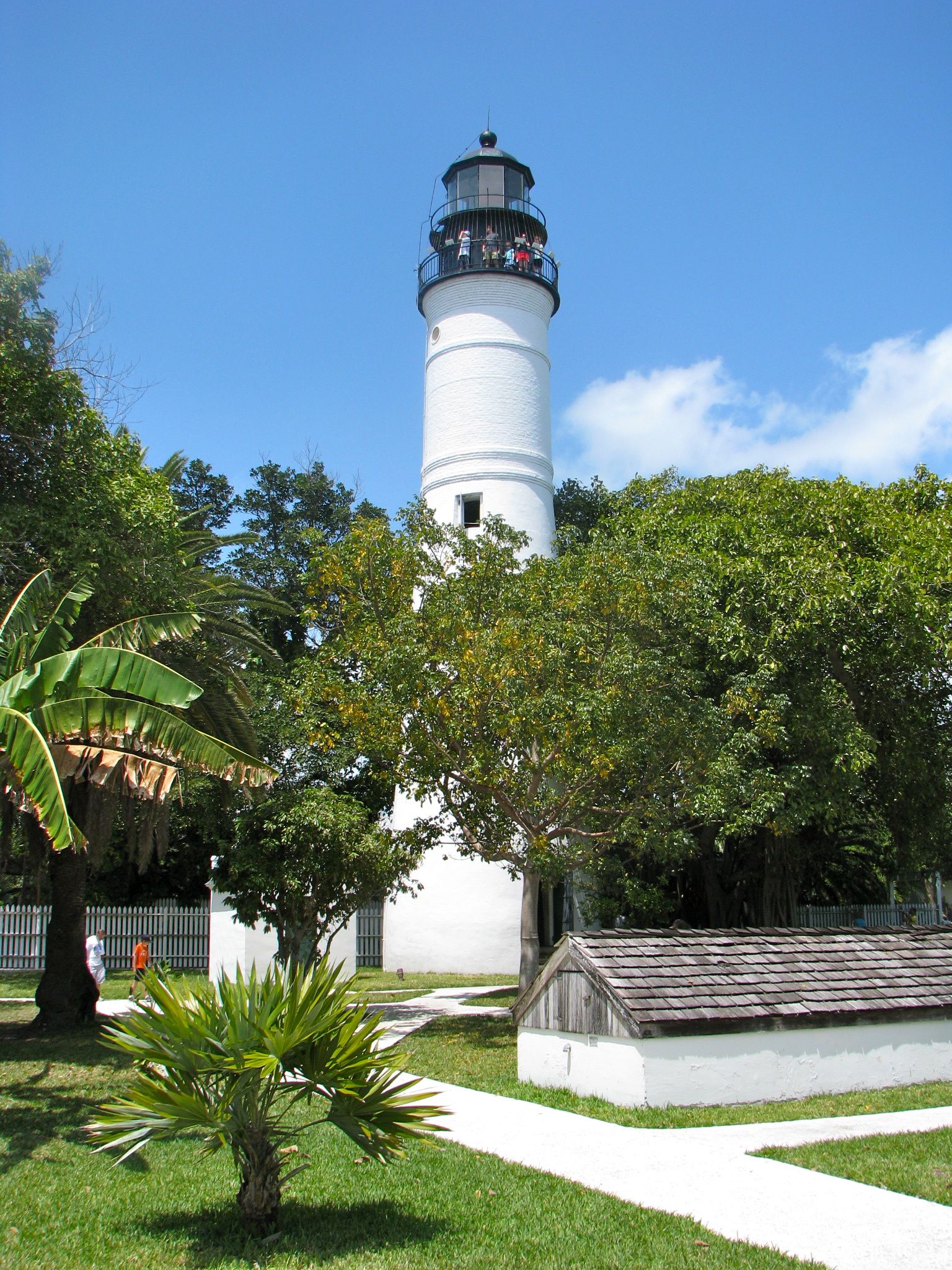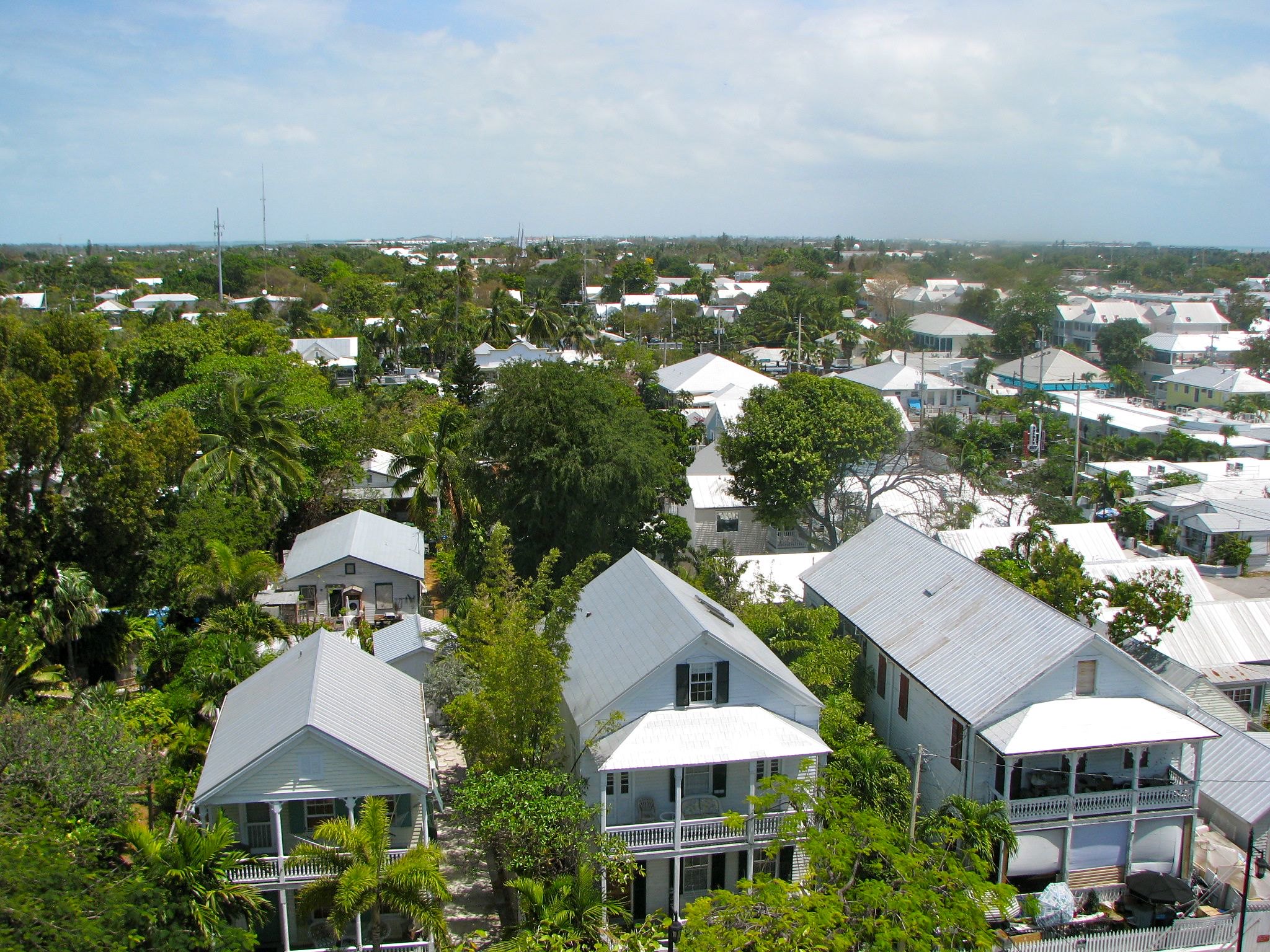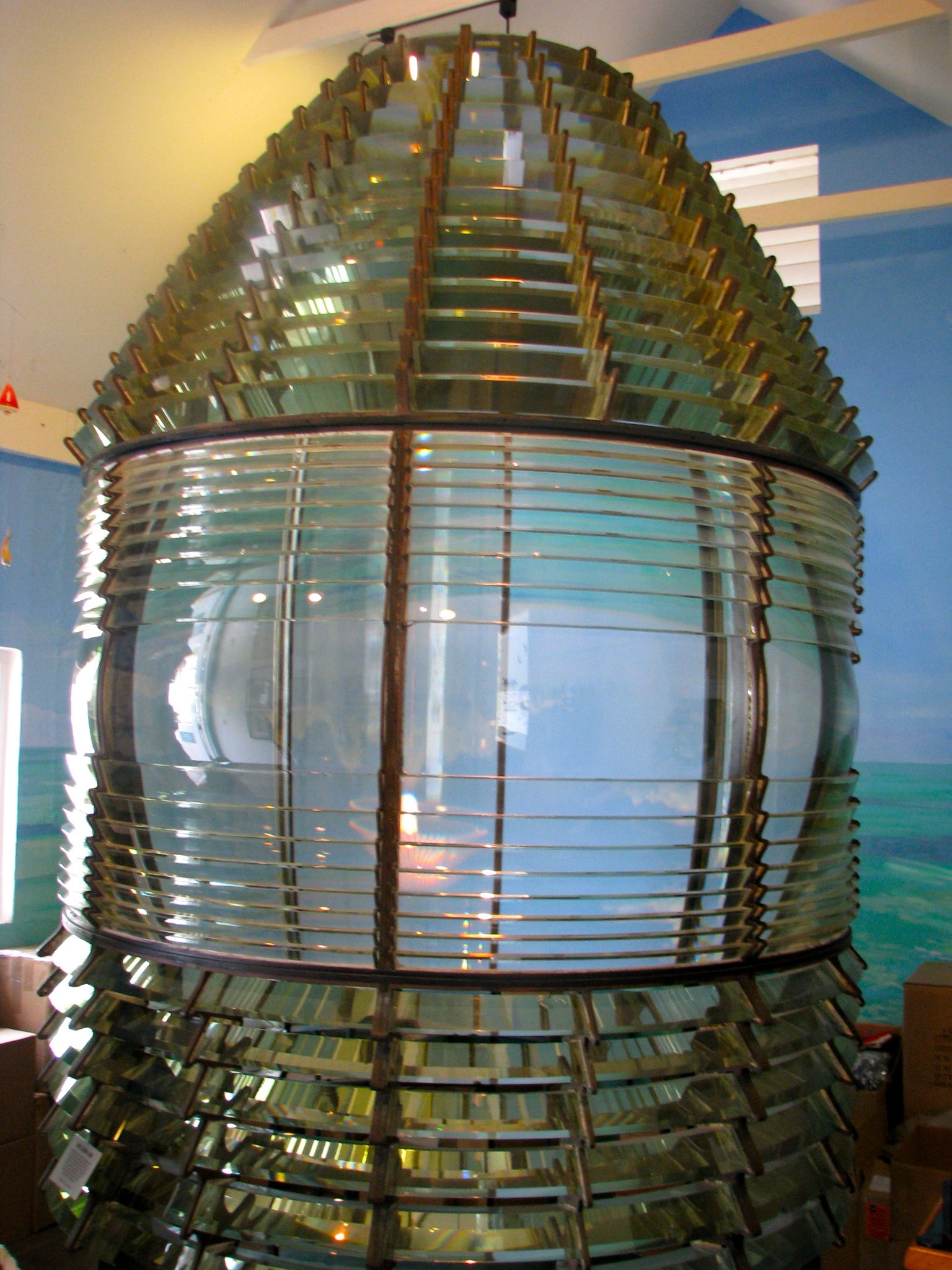Key West, Florida (April 2009)
A light rose early in the history of Key West — 1826 — just seven years after the territory of Florida became part of the United States. The original brick structure of the lighthouse towered sixty-five feet above the southernmost point of the island, illuminating seaward through the power of fifteen whale oil lamps. This tower collapsed in 1846 during a fierce hurricane, a recurring natural hazards of the Florida Keys. The government learned from its mistake and built the next lighthouse a half-mile inland at its present location in 1858. The builders outfitted it with a third-order Fresnel lens that has remained onsite ever since (map).
Growing Over Time

However, a problem confronted this inland location as the town of Key West grew around it. People continued to move into Key West where they built their homes and businesses. Their decorative trees began to grow so high they started to obscure the lighthouse signal. The government added five feet onto the lighthouse in 1873 and another 20 feet in 1895 to bring it up to its current height of 90.5 feet. That seemed sufficient.
Inside the Tower

The Key West Light features a conical structure built of brick. An iron circular stairway corkscrews through the hollow center eighty eight steps to a balcony immediately below the lantern room. The bricks become clearly visible under the white painted interior of this masonry tube. It offers plenty of room for single individuals to climb up or down, however it gets a bit cramped when groups of visitors try to climb and descend simultaneously.
The hike to the top seemed pleasant and not too strenuous during a perfect Spring day such as the one when we visited. I imagine it would be an entirely different story during the dark of night in those days before electricity, with howling winds and driving rains during hurricane season.
Shining a Light

The extra twenty five feet makes an amazing difference. Visitors can see clear across Key West and well out to sea, which of course would have been the entire point. The lighthouse went through further improvements as technologies progressed. Whale Oil gave way to incandescent oil vapors to acetylene and finally to electricity. Eventually it made sense to automated the lighthouse in the early Twentieth Century. It continued to serve as a navigational aid in this manner until it its deactivation in 1969, after nearly a hundred and fifty years of proud service to mariners.
Grounds and Museum

The property offers much more to see than just the lighthouse. There are a number of original structures on the grounds which have been completely restored to their original appearance including a fuel building and the 1886 keepers quarters. After decommissioning, the Coast Guard turned ownership of the light to Monroe County, who leased it to Key West Arts and Historical Society. The Society now preserves the historic lighthouse and its surrounding buildings as a museum.
The keeper’s quarters includes museum exhibits that portray the everyday lives of the lighthouse keepers and their families as well as some of the general history of old Key West. Visitors can also see several Fresnel lenses including this massive First Order lens that originally graced the Sombrero Key lighthouse further north in the Keys. You can see a photograph of that lighthouse on my South Florida Lighthouses page.
Readers who have an interest in lighthouses might also want to check my Lighthouse Index page.

Leave a Reply